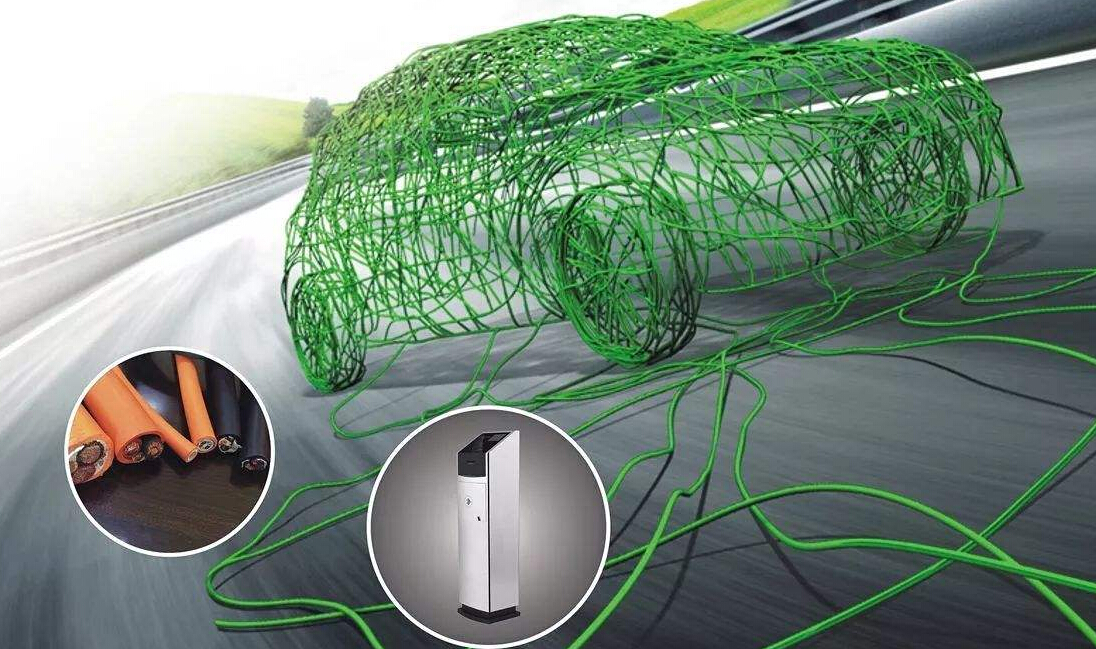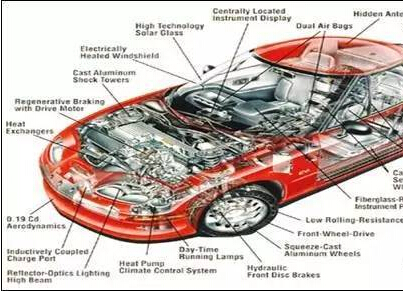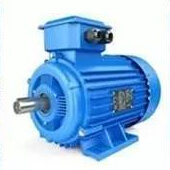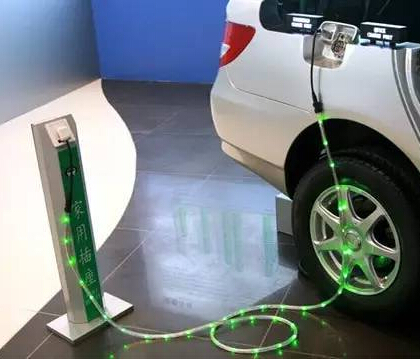1. Does the new energy vehicle represent progress?
According to data from China's new energy vehicle network, there are currently 98 well-known new energy vehicle manufacturers in the Chinese market. Including the high-end new energy vehicle field, the United States electric vehicle and energy company Tesla, China's new car market specializing in the new energy market, Ai Chi, Weilai, Xiaopeng, and other 14, as well as the tradition of entering the electric vehicle field There are 83 car companies, such as BAIC New Energy, BMW New Energy, and Changan New Energy. Of course, these 83 companies include traditional bus manufacturers that are entering the new energy field.
Whether it is a new force that specializes in the new energy market, or a traditional big car like GM, Ford, Volkswagen, BMW, or a cross-border like Xu Jiayin Dong Mingzhu, why do they unify the new energy-making car? What about cakes?
Traditional fuel vehicles consume both energy and the atmosphere. Contrary to the trend of energy saving and green living, new energy vehicles have emerged. The electric drive has greatly reduced the environmental burden and provided the public with a sustainable lifestyle. In addition, the Chinese government also hopes to achieve cornering overtaking in the new energy automobile industry. Since 2009, it has vigorously promoted the new energy automobile industry. The relevant documents and policies promulgated by the central and local governments have reached hundreds, and in 2017 alone, the country has introduced 32. The policies related to the new energy vehicle show the importance and determination of the country to the new energy automobile industry.
The central government mainly encourages the production and use of new energy vehicles in the form of tax incentives and financial subsidies. The main policy issued is the “Notice on the Exemption of New Energy Vehicle Vehicle Purchase Tax” (2014) Notice of Subsidy Policy, Notice of 2016-2020 New Energy Vehicle Promotion and Application Financial Support Policy (2016), etc. Not only is the vehicle purchase tax exempted, but each new energy vehicle is subsidized at least 20,000 yuan, while the subsidy for new energy buses is up to 300,000 yuan.
In 2015, China’s subsidies for electric vehicles amounted to 59 billion yuan, and in 2016 it reached 83 billion yuan. To curb fraud, in 2017, state subsidies generally fell 20% from 2016, and local subsidies must not exceed the state. 50% of the subsidy, but due to the increase in sales, the subsidy for 17 years is as high as 100 billion. According to this subsidy policy, to complete the goal of 5 million vehicles in 2020 mentioned in the government work report, the total amount of government subsidies will reach more than 400 billion yuan.

Under the guise of the industry itself, coupled with the government's help, companies have joined the new energy vehicle business. However, after the subsidies fell back, the sales of some car companies were obviously frustrated, and even some enterprises went bankrupt. The data shows that in 2017, BYD's new energy business revenue was approximately 39.1 billion yuan, up 12.83% year-on-year; compared with the growth of 80.27% in 2016, the current slowdown is particularly evident, while new energy vehicle sales are 9.7%. The growth rate is also much lower than the industry growth rate of 53.3%.
Second, how much money can make a new energy car dream?
Perhaps it is to see the broad prospects of new energy vehicles, Jia Yueting decided to concentrate on building a car in the United States to seek opportunities to turn over. On January 3, 2017, Faraday will officially release the first mass-produced electric vehicle FF91 in Las Vegas. Jia Yueting announced that the first batch of FF91 delivery is expected to be completed in December this year and will be completed in mid-2019. The mass production of FF91 allows him. The dream of a new energy car seems to have the potential to be realized. Xu Jiayin has even spent 14.49 billion yuan to cooperate with Guanghui Group to prepare for the sales of cars after mass production. The sudden turning of the two faces makes people have to wonder how much FF burned and caused such strong dissatisfaction with Evergrande. The table below summarizes the main financings obtained since the establishment of FF:
Third, why do you burn money?
As a typical technology, capital, and talent-intensive industry, the automobile industry itself is an industry that burns money. Whether it is the R&D, mass production or sales stage, the capital threshold is very high.
According to the financial report, Tesla's R&D investment last year was about 300 million US dollars. According to the contents of the Weilai Automobile prospectus, from 2016 to June 30, 2018, the company's research and development expenses totaled 5.53 billion yuan. More than 50% of all expenditures; in 2017, BAIC's new energy research and development costs are about 1.3 billion yuan. From this point of view, the annual research and development expenses of new energy vehicles are about 1.5 to 2 billion yuan.
And the car can not be completed overnight, but also need to continue to develop new models, continue to carry out blood transfusion for research and development, and then through the mass production return.
Mass production takes time and money. It takes at least two years from vehicle release to vehicle delivery. High-quality, high-level plant construction requires a lot of money. Tesla spent $5 billion on a "super factory" in Nevada; on October 17, Tesla received 864,885 square meters of industrial land in Shanghai, and a construction plan for Tesla's Shanghai super factory for $973 million. It is also gradually put on the agenda, and the cost is estimated to be $2 billion. In addition, on April 8 this year, Faraday will take about 601 acres of manufacturing land in Nansha District of Guangzhou for the construction of the factory at a reserve price of 364 million.
Peng Yong, chief analyst of BOC Securities, calculated an account. "In accordance with the design of 150,000 units, each vehicle has an investment of about 10,000 yuan in production equipment and facilities. The cost of developing a model in the early stage is about 300 million yuan. To 400 million yuan, plus related links, a passenger car project will require at least 3 billion yuan."
After mass production, the promotion of sales also burned money. Some car companies’ promotion expenses, channel development expenses, human resource costs, etc. even reached tens of billions. On September 23, Xu Jiayin and Sun Guangxin signed an agreement to invest 14.49 billion yuan. Car sales is the core business of Guanghui Group, which is obviously preparing for the follow-up sales of FF91.
Since 2009, China has been vigorously promoting the new energy automobile industry for nearly ten years. The popularity of new energy vehicles has also begun to bear fruit, but production and sales still cannot be compared with traditional fuel vehicles. In September 2018, the cumulative sales volume of traditional Chinese fuel vehicles was 2.0247 million, and the cumulative sales of new energy vehicles was only 95,000, which is less than 0.05% of the sales of traditional fuel vehicles. This situation is due to new Energy vehicles, especially high-end new energy vehicles, are more expensive. On the other hand, the current market is less acceptable to electric vehicles, especially the worry about the charging and battery life of electric vehicles. In this way, to tap the potential market, large-scale sales of new energy still require time and money.
















 RCCN WeChat QrCode
RCCN WeChat QrCode Mobile WebSite
Mobile WebSite







